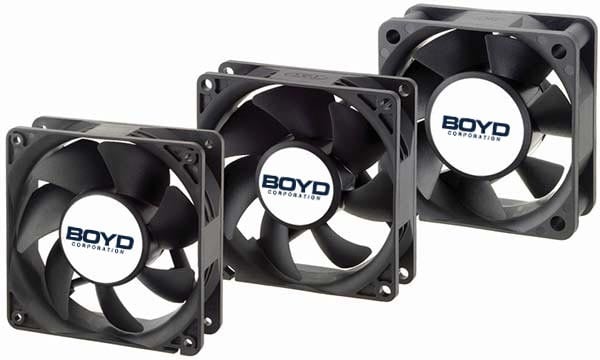很多时候,在设计过程中,热管理被认为太晚了,如果有的话。为了帮助您成为办公室的热专家,Boyd团队一直在寻找最新消息以及它与我们的热管理世界的关系。我们发现了一个很好的例子,说明为什么您应该始终考虑散热设计。这是一篇以“雷蛇的Blade Pro THX版是一个史诗般的移动制作强国”开头的产品评论。这篇文章对雷蛇的笔记本电脑,Blade Pro THX版高性能笔记本电脑进行了出色的评论。它赞美了该产品及其惊人的功能,例如色彩保真度对现实生活的高度,高质量的音响系统以及使其可与台式机相媲美的原始处理能力。
不以多种方式考虑热设计的代价
最终用户反馈和体验
但。。。
这个原本很棒的标题在最后变得酸涩:“Razer's Blade Pro THX Edition是一个史诗般的移动制作强国,拥有嘈杂的粉丝”
吵闹的粉丝!
令人印象深刻的用户如此惊人的评论在标题中被产品的冷却解决方案所破坏。如果你进一步阅读这篇文章,Stefan Etienne讲述了他对笔记本电脑的个人经历:
“这台笔记本电脑有如此响亮和夸张的风扇,我甚至可以在耳机上的游戏玩法中听到它们,音量设置为50%。坐在我附近的人以为空调打开了。
“此外,尽管有铜散热器和用于风扇的喷气涡轮机,但掌托会变得不舒服地热。
所以它既热又嘈杂。当您在笔记本电脑上时,这当然可以带您离开该区域。
您最大的营销盟友:用户
用户体验对于产品的成功与技术功能同样重要。这是一个功能强大的硬件,采用相对较小的移动封装,这使得任何类型的冷却解决方案都变得困难。Razer 的工程团队进行了尽职调查,并在为笔记本电脑硬件提供冷却时考虑了他们的散热设计。它有一个铜散热器,很可能是一个拉链鳍片或刮板鳍片解决方案,因为它适合笔记本电脑,并带有风扇来冷却高功率 CPU 和 GPU。在电气和机械上,该产品是健全的。但是,用户感到不舒服。
想想你问你的朋友和同事他们对任何产品和服务的看法。想想你在决定买什么、去哪里或吃什么之前检查的所有亚马逊、谷歌或 Yelp 评论。其他消费者是我们首先求助的消费者,在推荐新服务或产品时最信任他们。
用户,尤其是消费品用户,可能是您最大的广告客户。他们将以最热情地推广您的产品。尼尔森多年来的调查显示,口碑推荐是最受潜在消费者信任的,比如尼尔森在2015年的调查和2012年的另一项调查。虽然让客户满意是直观的,但客户满意度对品牌认知度和收入的影响是巨大的。
审慎的重要性
说用户体验有多重要很容易,但更容易陷入新产品的设计项目,而忽视了出色用户体验的最终目标。
项目可能会从一个部门传递到另一个部门,在此过程中,最初的产品愿景会丢失。
预算限制可能会缩短项目或要求设计团队跳过某些内容,在这种情况下,可能会降低散热器和风扇的成本。
笔记本电脑中的房地产一开始就很难获得。再加上消费者对更小产品的需求,Razer Blade Pro设计团队对自己提出了挑战。
可能有足够的空间来挤进解决方案以满足处理器的需求,但无法满足一些更模糊的限制,如触摸温度。
设计团队也可能有霸道的最后期限(或经理),使设计工程师无法给予用户体验足够的关注。
但是,对于产品的成功至关重要的是,要以更多方式考虑热设计,而不仅仅是产品的功能。
自然对流的关键点之一是实现传热,而无需与在产品中添加风扇相关的额外成本和组装时间。风扇或鼓风机会降低设备的整体可靠性,因为它们由电机驱动,电机会磨损,并可能在长时间使用产品时发生故障。
整个产品图片
对于这个设计团队来说,理想的情况是对他们的产品采取整体方法。他们打包到笔记本电脑中的所有功能的全部意义在于提供卓越的用户体验。当我们突破芯片的散热极限时,我们需要考虑的不仅仅是用户在屏幕上看到的内容、扬声器的声音以及键盘的触觉反馈。耳朵也会听到风扇的噪音,手指和手掌会感受到产品的任何过热。在设计过程中,需要更早地考虑冷却解决方案的噪音和触摸温度,这样您就不会把自己画在角落里。
扩展散热解决方案的空间
如果Razer设计团队根据用户可以处理的内容而不是硬件可以处理的内容来定义其最大温升,那么他们就可以围绕该要求进行构建。设计团队本可以为满足其硬件和用户需求的散热解决方案留出适当的空间。这些工程师可能要求增加散热器体积以增加散热器的表面积。这将提供更多的表面积来将热量传递到空气中。当一切都仍然是概念性的时,争夺笔记本电脑的房地产会更容易。
我们是你最大的粉丝
设计散热解决方案的工程师本可以设计更大的风扇或鼓风机。较大的风扇可以以与较小风扇相同的转速移动更多的空气。或者,您可以以较低的转速移动相同数量的空气。这种速度的降低也会减少来自风扇的噪音。虽然看起来更凉爽或噪音更大,但足够大的风扇可能能够解决这种用户体验的两个负面影响。
使用散热器,一切都与位置,位置,位置有关
在最初的设计中,负责芯片和热管理的工程师可能已经能够游说笔记本电脑的不同区域。有可能将产生热量的地方,CPU和GPU位置移动到对用户影响不大的地方。如果芯片卡在笔记本电脑的那个位置,也许热管理团队可以使用运输热管组件将热量从芯片和掌托转移到对用户来说不太重要但仍然有效的地方。
如果Razer Blade Pro THX Edition设计团队为其产品功能和用户开发热设计,那么Stefan Etienne的评论将是积极的。
利用整体设计提高用户对产品的接受度
本文是一个完美的例子,说明为什么您的散热设计不仅对设备很重要,而且对用户也很重要。仅仅将所有部件组装在一起并冷却设备是不够的。您需要确保整体用户体验良好。因此,在下一个设计周期中,请花额外的时间为用户完善散热设计,以及他们将如何与您的产品交互。如果有压力跳过该步骤,请推回并向他们展示此评论。
在你和真正花时间设计用户体验之间有什么挑战?在下面联系我们或在社交媒体页面上告诉我们!












